Slugs are the most damaging pests of gardens and houseplants. They attract damp, moist conditions and feed on plant parts. These pests prefer humid climates, and during the rainy season, they are abundantly present in gardens.
Slugs belong to the phylum Mollusca and are similar to snails except lacking the hard shell that snails have. Instead, these molluscans are soft-bodied and move through a gliding “muscle” foot running along the body. This muscle constantly secretes a slimy mucus which helps the slugs in movement, and later, it dries to form silvery slime trails. These slime trails indicate the recent presence of slugs and snails.

The most destructive species of garden slugs are the dark gray garden slug (Deroceras reticulatum), the three-band garden slug (Lehmannia. valentiana), the banded slug (Lehmannia poirieri), and greenhouse slug (Milax gagates).
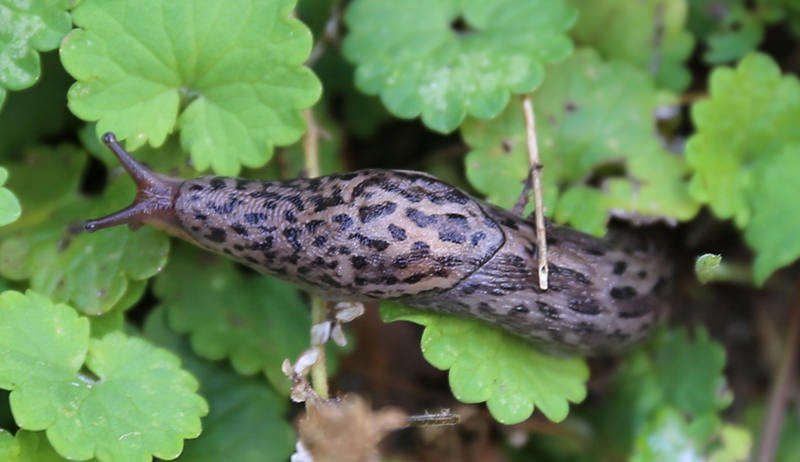
Slugs are legless molluscans (not insects) with a body length of four inches, while some species are one and half-inch long. They prefer moist garden soils.
Identification of Slug Eggs in Soil
All slugs and snails are hermaphrodites (bearing male and female reproductive organs) and lay eggs through self-fertilization. Slugs lay slimy white, round, transparent eggs under leaf litter, soil cracks, and beneath plant debris.
Slugs lay three to forty eggs in each batch and take three to six months to reach maturity. And they love to reside in mildly cold weather. In icy and hot conditions, slugs and snails hibernate in the topsoil. And in areas with moderate temperatures, slugs stay active (primarily active at night) all year round.
What Do Snail and Slug Eggs Look?
Snail and slug eggs are laid on topsoil layers under dead, damaged plant parts in spring. These eggs appeared as round and jelly-like masses, primarily seen in damp places. These eggs in potting soil and gardens are not good because these eggs hatch into slug juveniles that will harm the plants.
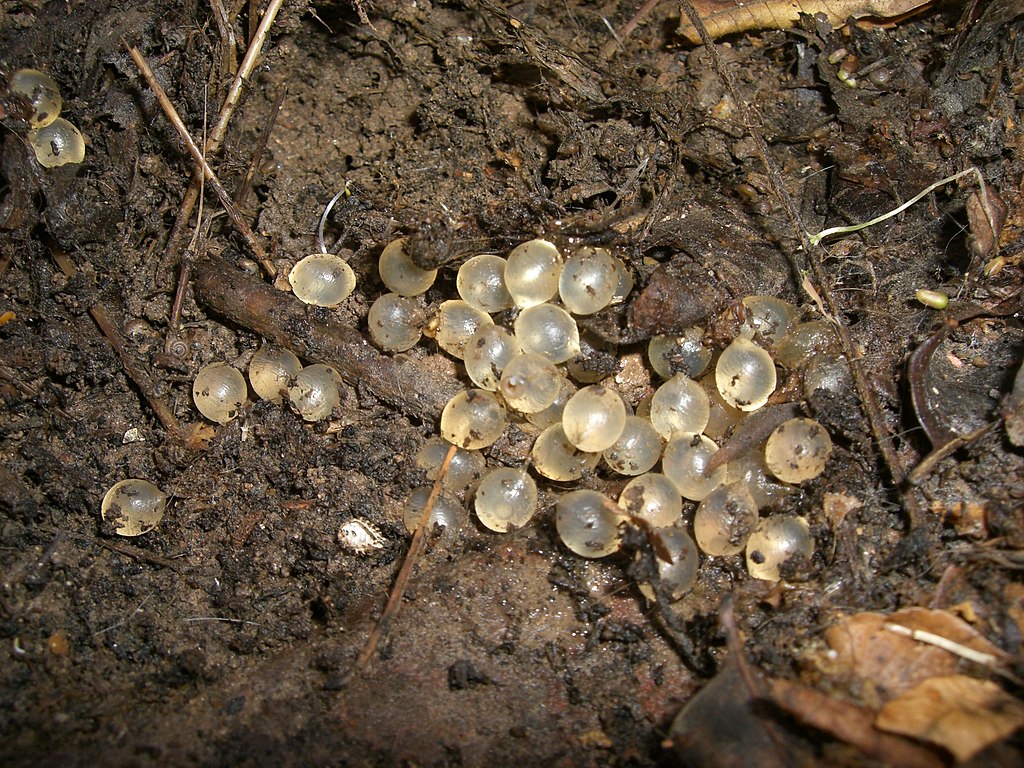

Slugs always lay their eggs in protected places such as potting soil, under plant debris, and soil cracks. Slug and snail eggs hatch within a month and juveniles are similar to adults but smaller. As these juveniles grow, they actively feast on plant leaves and grow into adult slugs in a time of two years. Finally, they overwinter as adult slugs and eggs to cope with the extreme cold weather.
Damage Caused by Slugs
Slugs are the worst enemies of the garden and houseplants. Once they go unnoticed, most likely, they will eat the whole leaves of plants and turn them into useless stems.

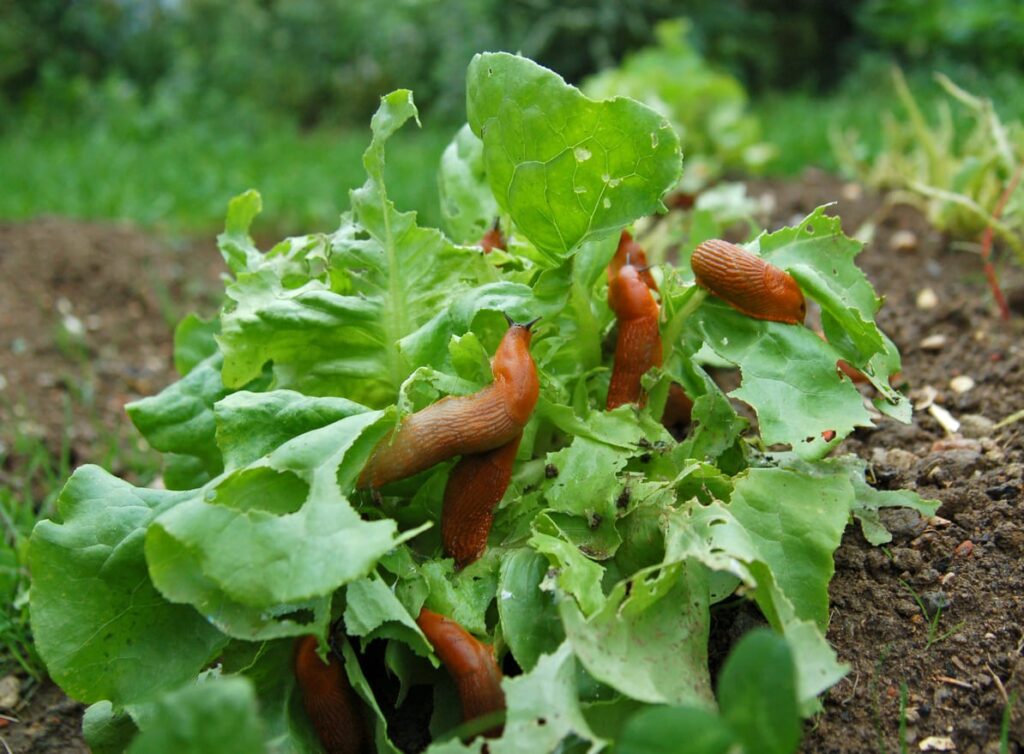
Slugs prefer succulent leaves and make irregular holes in leaves. They eat through their rasp-like tongue and damage plant foliage. In addition to vegetation, slugs also eat flowers and prefer leafy green vegetables. In other words, they are regarded as the pest of herbaceous plants.
Slugs tend to harm strawberries and tomatoes. They are also a serious pest of citrus fruits. In addition, the excessive feeding of slugs causes plants to wilt and die. Therefore, it is best to identify slug eggs and juvenile identification early to prevent the severe destruction of the garden and houseplants.
What Are the Best Practices to Get Rid of Slug Eggs in Soil?
Good management practices for eliminating slug eggs involve a combination of methods. Because slugs and snails appear in foggy and rainy weather, it is hard to recognize their damage (the feeding behavior is always confused with earwigs, caterpillars, and chewing insects). They also hide in protected places such as under plant debris, tree barks, and soil cracks.
A combination of these methods involves:
Hand Picking of Slug Eggs
Hand-picking is the most effective way to get rid of slug eggs in the soil daily. In gardens and interior spaces, the hide places for slugs should be removed instantly. Once their numbers are decreased, weekly handpicking will be sufficient.
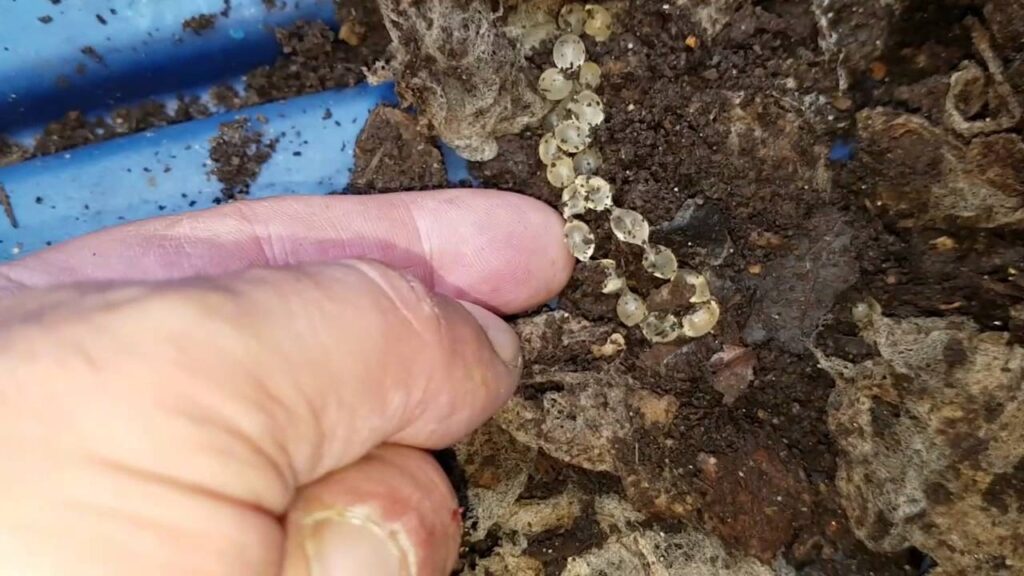
Another approach to eliminating slugs and their eggs is to water the infested places to draw them out. Therefore, watering the infested areas will draw out the slug eggs, then pick them up and place them in a plastic bag to dispose of, and hands can also trash these.
The solution of soap and water can also kill slugs and their eggs. Moreover, a five to ten percent solution of ammonia with water can kill the slugs, thus preventing the damage of these herbaceous enemies.
Use of Traps or Slug Bait for the Controlling of Slugs
Remove all the sheltering spots such as organic matter, weeds, growing tree branches in garden soil, and other organic debris to control the slug infestations. Remove ground covers from the garden because these can serve as heaven places for egg-laying. Do not overwrite the garden plants and landscapes because damp soil is ideal for slugs.
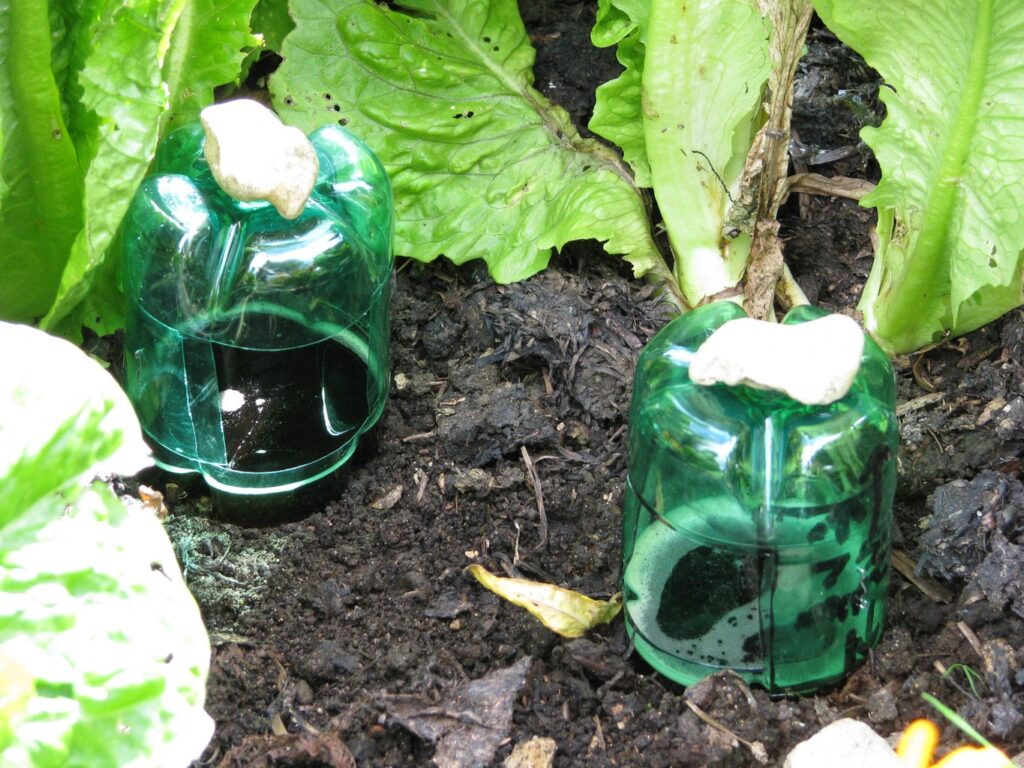
Various types of traps can use to capture slugs in gardens, and houseplants, such as inverted melon and orange rind, can trap them. In addition to that, wooden and plastic water bottles also make good traps for slugs. However, it is difficult to leave them once they are under these traps.
Beer Baited Traps for Slugs
The beer baits or slug baits interfere with their usual foliage feeding habits. Because they are also attracted to beer, it is used to drown and kill them.
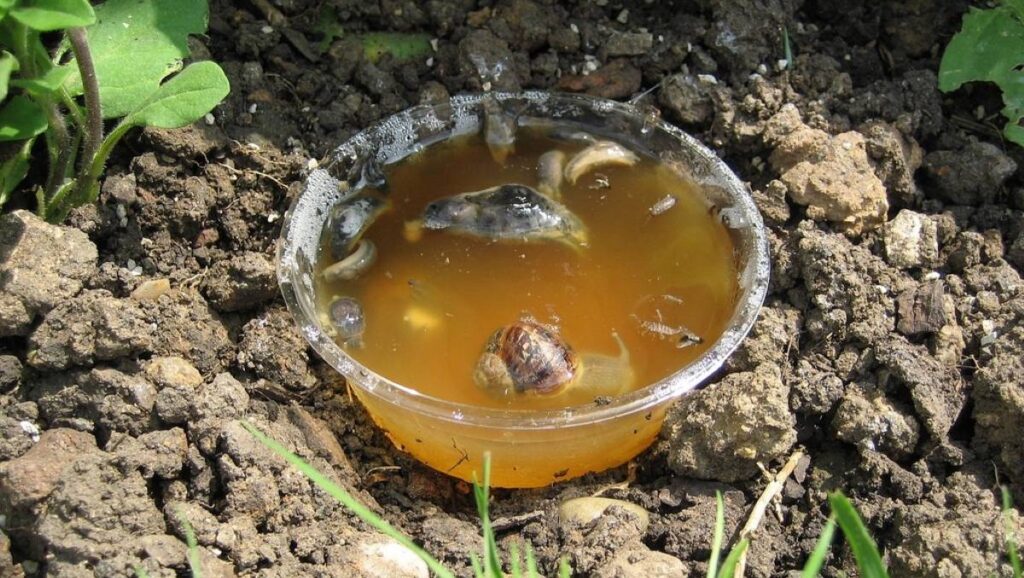
The slugs will come for a sip and fall in it and drown. These traps effectively catch the maximum slugs and snails numbers in gardens and prevent foliage damage. To effectively manage slugs, place at least three to five traps in your whole garden to trap the maximum number of slugs.
Use of Barriers to Keep Slugs Out from Gardens
Various types of barriers are also helpful to keep the slugs and their juveniles out from gardens and landscapes. Such as copper foil and screen barriers will restrict the entry of slugs in gardens. The copper in copper tape reacts with the slimy substance of the slugs that they secrete and causes a nervous breakdown like an electric shock and kills them.
Wrap the copper foil around houseplant pots or near boxes to control slugs. It will react with their slimy substance, thus killing them. Also, the dry diatomaceous earth barriers are effective against slug populations. Place dry diatomaceous earth in a band one inch in height and three inches wide around the garden to keep the slugs away.
Spray soapy or salty water to kill the slugs and eggs in houseplants.
Biological Control of Slugs and Their Eggs
Slugs have so many natural enemies, and they are helpful in their satisfactory control, such as ground beetles, wild birds, and toads. But, unfortunately, these natural enemies of slugs effectively control them and their eggs. One such predator of slugs is the “devils coach horse”—a deadly eater of slugs and their eggs and effectively managing their gardens’ populations.
Chemical Control of Slugs
Many molluscicides are available in the market to control slugs. Such as iron phosphate baits are available as Sluggo and Slug magic that are toxic to slug and snail populations. These baits act as antifeedants and successfully control slugs. Sulfur-containing baits also prevent slug-caused foliage damage.
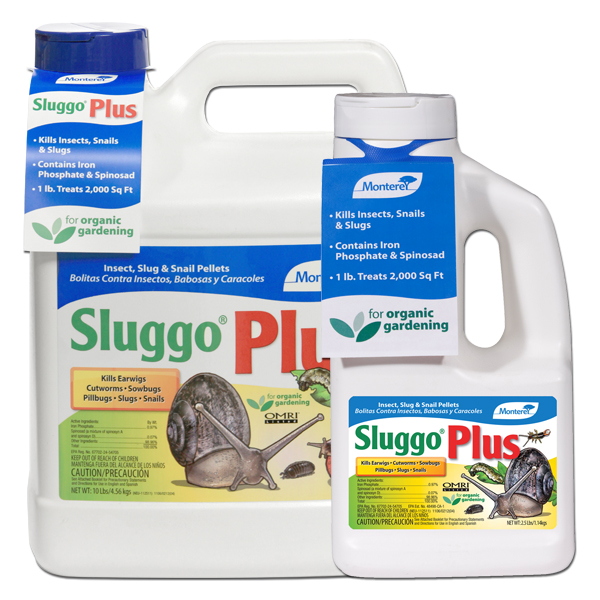
For effective results, sprinkle these baits on garden soil or the areas where slugs hide or frequently visit. These are only effective for the outdoors because chemical baits can be toxic for kids, pets, and humans for interior spaces.
FAQs
How Do You Get Rid of Slug Eggs in Soil?
To get rid of slug eggs in the soil, pour salty water on the eggs and juveniles, and use tweezers to destroy the eggs. Also, hand-picked the eggs and placed them in slightly soapy or salty water to poison them. Furthermore, the natural enemies of slugs also feast on their eggs and kill their juveniles.
Another best way to get rid of slug eggs is by bleach mixture. Pour bleach into the water, mix them thoroughly, remove eggs from the soil, and submerge them into the bleach mixture for destruction.
Do Slugs Hide in Soil?
Slugs prefer moist and protected places for their hide. Therefore, they dug deep furrow up to six feet in the soil to stay in damp areas. During extreme cold and summer, they hibernate themselves to the soil’s top layer and lay eggs in this layer. While during mild temperatures, they appear. However, they remain active throughout the year in areas with moderate temperatures.
How Long Does it Take for a Slug Egg to Hatch?
Once the slug eggs mature, they take up to two weeks to a month to hatch in favorable environmental conditions. Sometimes, it can take up to five months to hatch when the eggs are late in winter.
Sources for Further Reading
- Snails and Slugs Management Guidelines–UC IPM. (2018, March 3). University of California IPM. Retrieved February 11, 2022, from http://ipm.ucanr.edu/PMG/PESTNOTES/pn7427.html
- Managing Slugs and Snails. (n.d.). Oregon State University. Retrieved February 11, 2022, from https://extension.oregonstate.edu/sites/default/files/documents/12281/managingslugssnails.pdf
- Biology and Life Cycle of the Gray Field Slug. (n.d.). College of Agricultural Sciences. Retrieved February 11, 2022, from https://agsci.oregonstate.edu/slug-portal/life-slug/biology-and-life-cycle-gray-field-slug
Now that you know how to get rid of slug eggs in soil, make sure your plants are free of other plant bugs. Read these tips:
How to Kill Mealybugs on Plants With Organic and Inorganic Methods?
Fungus Gnats in Houseplants & How to Identify and Effectively Control Them?







